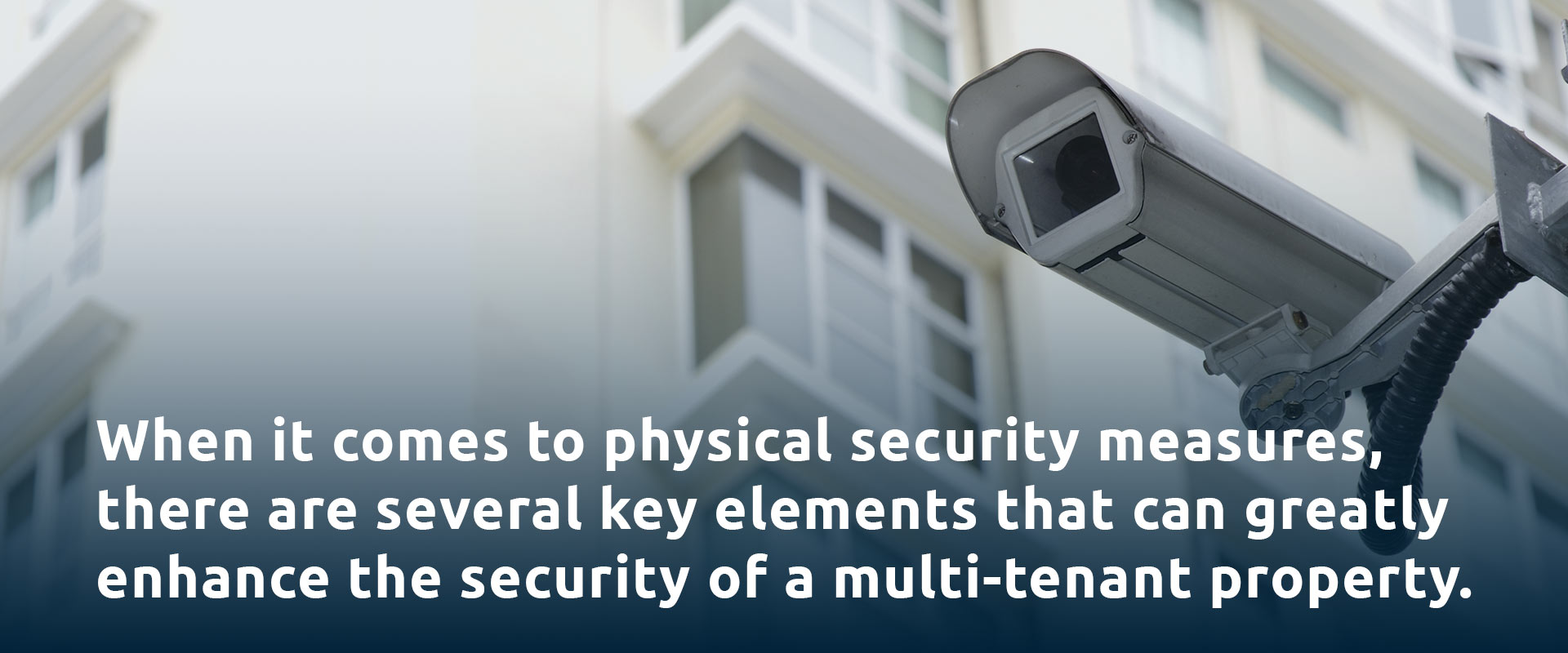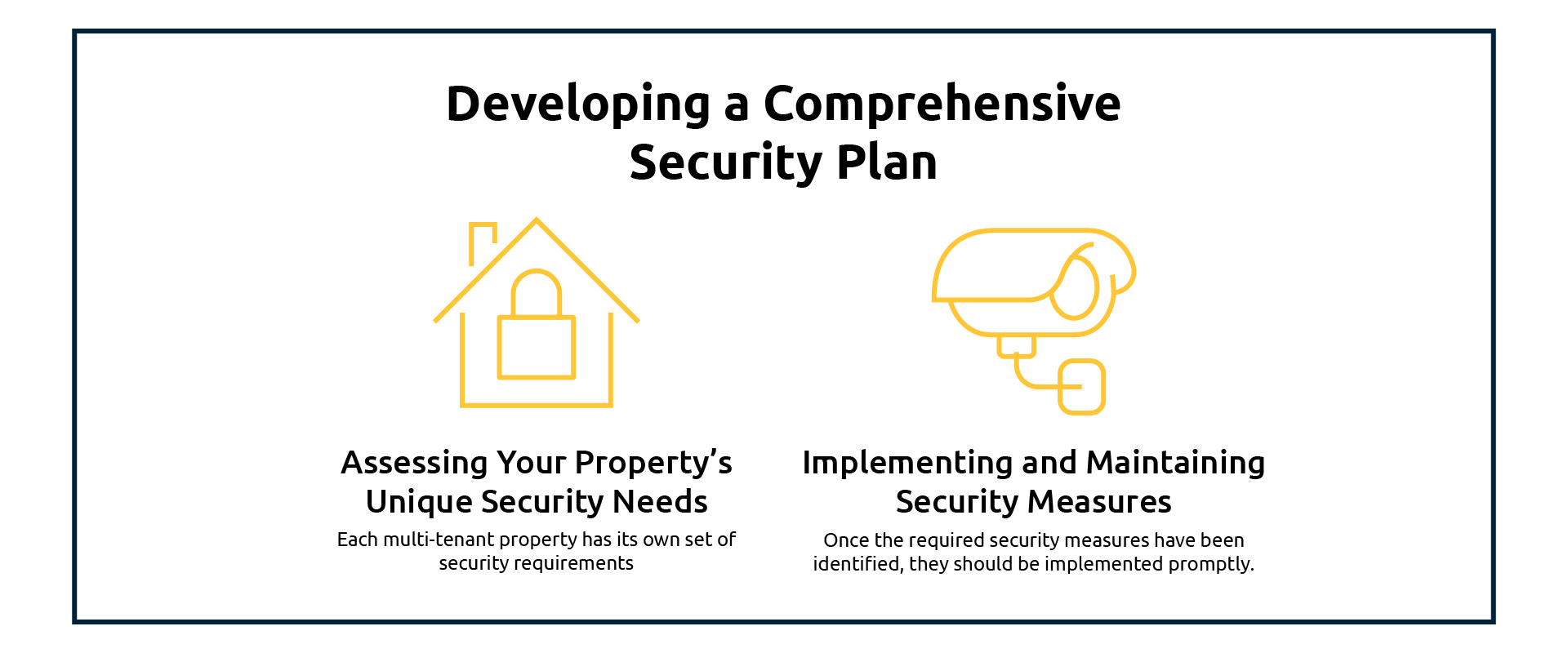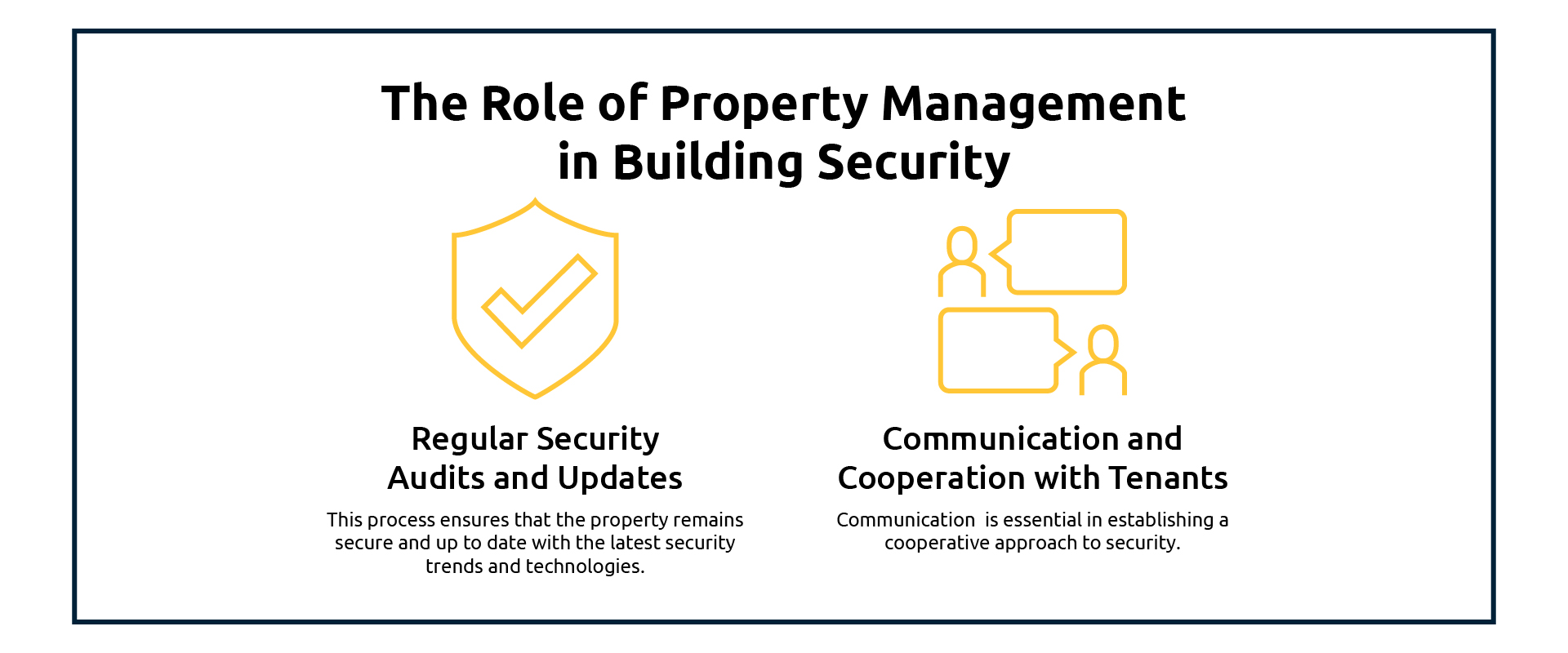In today’s dynamic real estate market, multi-tenant properties are becoming increasingly popular. These properties offer a range of benefits, including shared expenses and amenities, as well as a vibrant community of occupants.
However, with the growing number of tenants, ensuring security and safety within these properties has become a critical concern for property owners and managers.
 Understanding the Importance of Multi-Tenant Property Security
Understanding the Importance of Multi-Tenant Property Security
Security in multi-tenant properties is more than just a matter of convenience – it is essential in creating a safe and welcoming environment for tenants. By proactively addressing security concerns, property owners can enhance tenant satisfaction and attract high-quality, long-term tenants.
Ensuring the safety and security of tenants should be a top priority for property owners and managers. When tenants feel safe in their homes or workplaces, they are more likely to have a positive experience and develop a sense of belonging within the community. This, in turn, leads to higher tenant satisfaction and increased tenant retention rates.
The Role of Security in Tenant Satisfaction
Tenant satisfaction is crucial for the success of any multi-tenant property. When tenants feel safe and secure, they are more likely to renew their leases and recommend the property to others. Therefore, prioritizing security measures is not only beneficial for the tenants but also for the overall profitability of the property.
Implementing robust security measures can help create a sense of trust and peace of mind among tenants. This can include installing surveillance cameras in common areas, implementing access control systems, and hiring security personnel to patrol the premises. Additionally, regular communication with tenants about security updates and protocols can further enhance their sense of safety and satisfaction.
Furthermore, a secure environment can foster a positive community atmosphere within the multi-tenant property. When tenants feel safe, they are more likely to engage in social activities and interact with their neighbors, creating a sense of camaraderie and belonging. This can lead to a more vibrant and harmonious living or working environment.
Potential Risks in Multi-Tenant Properties
Multi-tenant properties face unique security risks due to the shared nature of the space. Unauthorized access, theft, vandalism, and even personal safety concerns can arise if proper security measures are not in place. Recognizing these risks is the first step towards mitigating them effectively.
One of the main risks in multi-tenant properties is unauthorized access. With numerous individuals coming and going, it can be challenging to ensure that only authorized individuals have access to the premises. This can lead to security breaches and potential incidents. Implementing access control systems, such as key cards or biometric scanners, can help prevent unauthorized entry and enhance overall security.
Theft is another significant concern in multi-tenant properties. With multiple tenants and shared spaces, it becomes crucial to have measures in place to prevent theft and protect tenants’ belongings. Installing security cameras in common areas and providing secure storage options can help deter theft and provide peace of mind to tenants.
Vandalism is also a potential risk in multi-tenant properties. Common areas, such as lobbies, elevators, and parking lots, are susceptible to damage caused by unruly individuals. Implementing surveillance cameras and increasing lighting in these areas can help deter vandalism and improve overall security.
Lastly, personal safety concerns should not be overlooked. Tenants should feel safe not only within their individual units but also in shared spaces. Adequate lighting, well-maintained walkways, and visible security personnel can contribute to a safer environment and reduce the risk of personal safety incidents.
 Key Elements of a Secure Multi-Tenant Property
Key Elements of a Secure Multi-Tenant Property
Creating a secure environment in a multi-tenant property requires a comprehensive approach that combines physical security measures and technological solutions.
When it comes to physical security measures, there are several key elements that can greatly enhance the security of a multi-tenant property. Secure entry and exit points are essential to ensure that only authorized individuals have access to the premises. These entry and exit points can be equipped with keycard or biometric systems, providing an extra layer of security by requiring a unique identifier for entry.
In addition to secure entry and exit points, perimeter fencing is another important physical security measure. Fencing not only acts as a deterrent for potential criminals, but it also helps define the boundaries of the property, making it clear where authorized access begins and ends. The fencing can be reinforced with anti-climbing measures to further discourage any unauthorized attempts to breach the property.
Surveillance cameras play a crucial role in monitoring and deterring criminal activity. Strategically placed cameras can cover all areas of the property, ensuring that any suspicious activity is captured and recorded. These cameras can be equipped with advanced features such as motion detection and facial recognition, allowing for more accurate identification of individuals and potential threats.
Proper lighting is also essential for a secure multi-tenant property. Well-lit areas not only create a sense of safety for tenants and visitors but also make it more difficult for criminals to hide or carry out illegal activities unnoticed. Motion-activated lights can be installed to conserve energy while still providing adequate illumination when needed.
Signage is often overlooked but plays a vital role in controlling access and monitoring activities within a multi-tenant property. Clear and visible signs can indicate restricted areas, remind tenants and visitors of security protocols, and provide emergency contact information. These signs serve as a constant reminder of the property’s commitment to security and can help deter potential criminals.
While physical security measures are crucial, technological security solutions have become increasingly important in today’s digital age. Access control systems, for example, can provide an efficient and secure way to manage entry and exit points. These systems can be integrated with keycards, biometric scanners, or even mobile apps, allowing for seamless access management and reducing the risk of unauthorized entry.
Video surveillance systems have also evolved significantly, offering high-definition cameras with advanced analytics capabilities. These systems can not only record footage but also analyze it in real-time, detecting suspicious behavior or identifying individuals of interest. Some systems even have the ability to send alerts to security personnel, enabling them to respond quickly to potential security breaches.
Intercom systems are another technological security solution that can greatly enhance the overall security of a multi-tenant property. These systems allow for clear communication between tenants, visitors, and security personnel, ensuring that only authorized individuals are granted access to the premises. Intercom systems can be integrated with access control systems, further enhancing their effectiveness.
Alarm systems are yet another technological security solution that can provide an added layer of protection. These systems can be configured to detect unauthorized access, motion, or even environmental hazards such as smoke or fire. When triggered, alarms can alert both tenants and security personnel, allowing for a swift response to any potential threats.
In conclusion, a secure multi-tenant property requires a combination of physical security measures and technological solutions. By implementing secure entry and exit points, perimeter fencing, surveillance cameras, lighting, signage, access control systems, video surveillance systems, intercom systems, and alarm systems, property owners can create a safe and secure environment for tenants and visitors alike.
 Developing a Comprehensive Security Plan
Developing a Comprehensive Security Plan
A proactive and well-executed security plan is essential to ensure the safety and security of a multi-tenant property. This plan should be tailored to the unique needs and characteristics of the property.
Assessing Your Property’s Unique Security Needs
Each multi-tenant property has its own set of security requirements. Conducting a thorough assessment of the property’s vulnerabilities and risks is crucial in identifying the necessary security measures. This assessment should take into account the layout of the property, the number of tenants, the location, and any previous security incidents.
Implementing and Maintaining Security Measures
Once the required security measures have been identified, they should be implemented promptly. Regular maintenance and inspections are also essential to ensure that the security systems are functioning optimally. Additionally, ongoing training should be provided to property management staff and tenants to raise awareness and maximize the effectiveness of the security measures.
 The Role of Property Management in Building Security
The Role of Property Management in Building Security
Property managers play a crucial role in maintaining the security of multi-tenant properties. They are responsible for overseeing the implementation and management of security measures.
Regular Security Audits and Updates
Regular security audits should be conducted to assess the effectiveness of existing security measures and identify areas for improvement. This process ensures that the property remains secure and up to date with the latest security trends and technologies.
Communication and Cooperation with Tenants
Open and transparent communication between property management and tenants is essential in establishing a cooperative approach to security. Regular communication channels should be established to provide safety guidelines, address concerns, and encourage tenants to report any suspicious activities.
 Legal and Insurance Considerations for Property Security
Legal and Insurance Considerations for Property Security
Ensuring proper security measures in multi-tenant properties not only protects the tenants and property but also helps mitigate legal and insurance risks.
Understanding Liability in Multi-Tenant Properties
Property owners and managers have a legal responsibility to maintain a safe and secure environment for their tenants. Failing to meet this duty of care can result in legal liabilities. Therefore, it is essential to understand the legal obligations and take necessary precautions to avoid potential legal issues.
The Impact of Security on Property Insurance
Insurance companies often take into account the security measures implemented in a multi-tenant property when offering coverage and determining premiums. By demonstrating a strong commitment to security, property owners can benefit from lower insurance costs and greater protection against potential losses.
In conclusion, securing a multi-tenant property requires a comprehensive approach that addresses the unique challenges and risks associated with shared spaces. By adopting physical security measures, implementing technological solutions, developing a comprehensive security plan, and involving property management, property owners can create a safe and secure environment that enhances tenant satisfaction and protects the value of their investment.
 ASAP Security Guards are committed to your success and the experts when it comes to developing a plan for your security!
ASAP Security Guards are committed to your success and the experts when it comes to developing a plan for your security!
Get Your Free Quote Today!
Reach out to ASAP Security now for any questions or if you need a quote.
We are proud of our stellar customer service record, so check our website for all the testimonials from our various satisfied customers. Call ASAP Security at 1-833-272-7247

 Understanding the Importance of Multi-Tenant Property Security
Understanding the Importance of Multi-Tenant Property Security Key Elements of a Secure Multi-Tenant Property
Key Elements of a Secure Multi-Tenant Property Developing a Comprehensive Security Plan
Developing a Comprehensive Security Plan The Role of Property Management in Building Security
The Role of Property Management in Building Security Legal and Insurance Considerations for Property Security
Legal and Insurance Considerations for Property Security